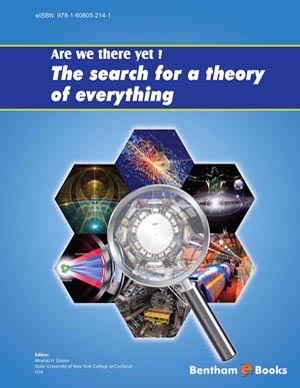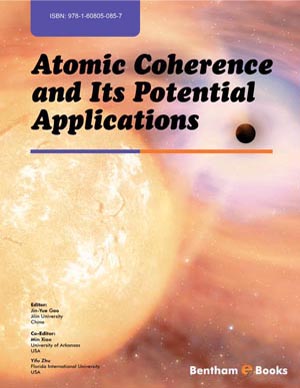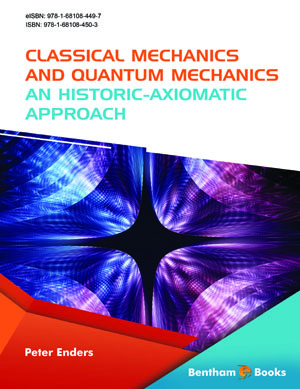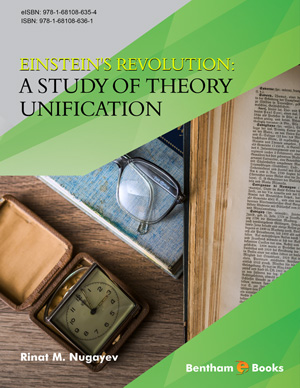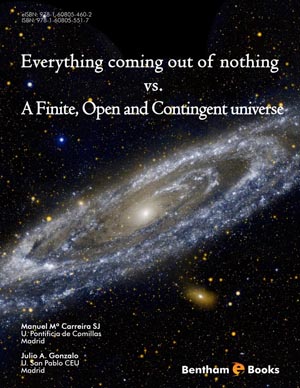Bodies and Their Characteristics
Page: 1-18 (18)
Author: M. Belevich
DOI: 10.2174/9781681084091117010003
PDF Price: $15
Abstract
This introductory chapter tries to explain what we are going to do, what do notions such as fluid and a model of a physical phenomenon mean, what for, such models are developed, and what features of a phenomenon a model should be necessarily able to describe and so on.
Basic Hypotheses and Laws
Page: 19-37 (19)
Author: M. Belevich
DOI: 10.2174/9781681084091117010004
PDF Price: $15
Abstract
We try to show the necessity of accepting the fundamental continuity hypothesis, which implies introduction of such new notions as integral parameters of a medium and their densities. We also discuss a configuration of a body and its deformation as well as methods of its description. The concepts of the Lagrangian and Euler coordinates are considered.
Rates of Change of Characteristics of Continuum
Page: 38-52 (15)
Author: M. Belevich
DOI: 10.2174/9781681084091117010005
PDF Price: $15
Abstract
Methods of description of the rates of change of characteristics of a medium are studied. The rate of change of a place of a point of a body is considered. The rates of change of characteristics specified by scalar and vector functions are also discussed. The index summation convention is introduced.
Minimum Information About Tensors
Page: 53-62 (10)
Author: M. Belevich
DOI: 10.2174/9781681084091117010006
PDF Price: $15
Abstract
Minimal necessary information about tensors is presented. Definition of a tensor of the 2nd rank is given, and components of a tensor with respect to some basis are considered. Algebraic and differential operations, allowing to build tensor expressions are discussed. Some special tensors are defined. Also the eigenvalue problem is studied.
Abstract
We study an arbitrary deformation of a configuration of a body and show that this deformation may be reduced to a sequence of two special deformations: the rotation and stretching. The kinematics of a deformation is also considered. We introduce a notion of a vorticity vector and discuss its relationship with the antisymmetric part of the velocity gradient.
The Continuity Equation
Page: 74-81 (8)
Author: M. Belevich
DOI: 10.2174/9781681084091117010008
PDF Price: $15
Abstract
Starting from this chapter and to the end of the first part we are building a closed system of equations of a fluid model. Firstly, we discuss differential conservation laws, and related balance equations. All previously obtained expressions are applied then to the mass of a body, and this gives the first equation of the fluid model, the continuity equation.
Fluid Dynamics
Page: 82-95 (14)
Author: M. Belevich
DOI: 10.2174/9781681084091117010009
PDF Price: $15
Abstract
We postulate the basic principle of dynamics and derive the second equation of the fluid model, the equation of motion. The dynamics of the fluid is investigated. We introduce the notion of momentum of the body, study the rate of change of momentum and discuss forces acting on a body. The body forces and the contact forces and corresponding densities are considered. The equation of motion in the Cauchy form is obtained. Finally, we propose the simplest form of the stress tensor which gives the equation of motion of the perfect fluid.
Abstract
We postulate the total energy balance (the first law of thermodynamics) and derive the third equation of the fluid model, the internal energy density balance equation. The kinetic energy of the body is defined and its balance is discussed. The power of forces acting on the body is also discussed. The notion of internal energy is introduced, and its balance is considered. Finally, we formulate the complete system of equations of the fluid model.
Perfect Fluid
Page: 110-122 (13)
Author: M. Belevich
DOI: 10.2174/9781681084091117010011
PDF Price: $15
Abstract
We study the model of the perfect fluid. Firstly, we discuss the problem posing for this fluid model and derive the Lamb form of the equation of motion. Further we investigate some simplest problems which are associated with the perfect fluid. We consider the hydrostatics, the barotropic fluid, the Bernoulli equation, trajectories and streamlines. Finally we obtain the vorticity equation.
Incompressible Perfect Fluid
Page: 123-134 (12)
Author: M. Belevich
DOI: 10.2174/9781681084091117010012
PDF Price: $15
Abstract
A model of the perfect fluid with an additional assumption of incompressibility of the medium is considered. We derive the Helmholtz equation and formulate the Lagrange and Helmholtz theorems which follow from this equation. We also discuss two-dimensional flows and introduce a new concept of stream function. Next we consider potential flows and study the relationship between the velocity potential and the stream function for a stationary two-dimensional flow.
Viscous Fluid
Page: 135-144 (10)
Author: M. Belevich
DOI: 10.2174/9781681084091117010013
PDF Price: $15
Abstract
We study the modification of the stress tensor to account for shear stresses, and derive the Navier-Stokes equation of motion of the viscous fluid. Next we discuss the problem posing for the viscous fluid model, and also consider the energy balance together with the viscous dissipation of the kinetic energy.
Related Topics
Page: 145-156 (12)
Author: M. Belevich
DOI: 10.2174/9781681084091117010014
PDF Price: $15
Abstract
The issues connected with material of the previous chapters are considered. We define the temperature and derive the heat equation. Next we discuss the free convection and obtain the system of equations describing this phenomenon. We study the applicability of the perfect and viscous fluid models, introduce the non-dimensional form of equations of the fluid model, and consider the dynamic similarity of the flows.
Turbulent Fluid
Page: 157-170 (14)
Author: M. Belevich
DOI: 10.2174/9781681084091117010015
PDF Price: $15
Abstract
The modification of the fluid model to describe the turbulent flow is considered. We study the hydrodynamic instability, methods of description of turbulence, the problem of averaging and the energy balance of the turbulent fluid. Finally, we derive the Reynolds equation of motion.
Boundary Layers
Page: 171-185 (15)
Author: M. Belevich
DOI: 10.2174/9781681084091117010016
PDF Price: $15
Abstract
The important concept of the boundary layer is introduced. We study the laminar, thermal and turbulent boundary layers and also derive a system of boundary layer equations. The concept of the boundary layer thickness is considered and the separation of the boundary layer is discussed. The general profile of the average velocity of the turbulent flow near a smooth wall, and the effects of roughness are being studied. The notion of the roughness parameter is defined.
Fluid Mechanics from an Observer’s Viewpoint
Page: 186-205 (20)
Author: M. Belevich
DOI: 10.2174/9781681084091117010017
PDF Price: $15
Abstract
In this chapter1 we focus our attention on one of the possible improvements of the classical model of the viscous fluid. The goal is to overcome the basic shortcoming of the classical model: the contradiction with the causality principle. To solve the problem we take into account an observer, consider him as an element of the model and build the model of the fluid from his unique point of view. This approach appears to be rather general and allows application in related areas such as heat and mass transfer, signal propagation in a moving continuum and others.
Text Books for Further Reading
Page: 233-233 (1)
Author: M. Belevich
DOI: 10.2174/9781681084091117010022
Introduction
This textbook primarily explains the construction of classical fluid model to readers in a holistic manner and the way it is constructed. Secondly, the book also demonstrates some possible modifications of the initial model which either make the model applicable in some special cases (viscous or turbulent fluids) or simplify it in accordance with peculiarity of a particular problem (hydrostatics, two-dimensional flows, boundary layers, etc.). The book explains theoretical concepts in two parts. The first part is dedicated to the derivation of the classical model of the perfect fluid. The second part of the book covers important modifications to the fluid model which account for calculations of momentum, force and the laws of energy conservation. Concepts in this section include the redefinition of the stress tensor in cases of viscous or turbulent flows and laminar and turbulent boundary layers. The text is supplemented by appropriate exercises and problems which may be used in practical classes. These additions serve to teach students how to work with complex systems governed by differential equations. Classical Fluid Mechanics is an ideal textbook for students undertaking semester courses on fluid physics and mechanics in undergraduate degree programs. This textbook primarily explains the construction of classical fluid model to readers in a holistic manner and the way it is constructed. Secondly, the book also demonstrates some possible modifications of the initial model which either make the model applicable in some special cases (viscous or turbulent fluids) or simplify it in accordance with peculiarity of a particular problem (hydrostatics, two-dimensional flows, boundary layers, etc.). The book explains theoretical concepts in two parts. The first part is dedicated to the derivation of the classical model of the perfect fluid. The second part of the book covers important modifications to the fluid model which account for calculations of momentum, force and the laws of energy conservation. Concepts in this section include the redefinition of the stress tensor in cases of viscous or turbulent flows and laminar and turbulent boundary layers. The text is supplemented by appropriate exercises and problems which may be used in practical classes. These additions serve to teach students how to work with complex systems governed by differential equations. Classical Fluid Mechanics is an ideal textbook for students undertaking semester courses on fluid physics and mechanics in undergraduate degree programs.


.jpg)


